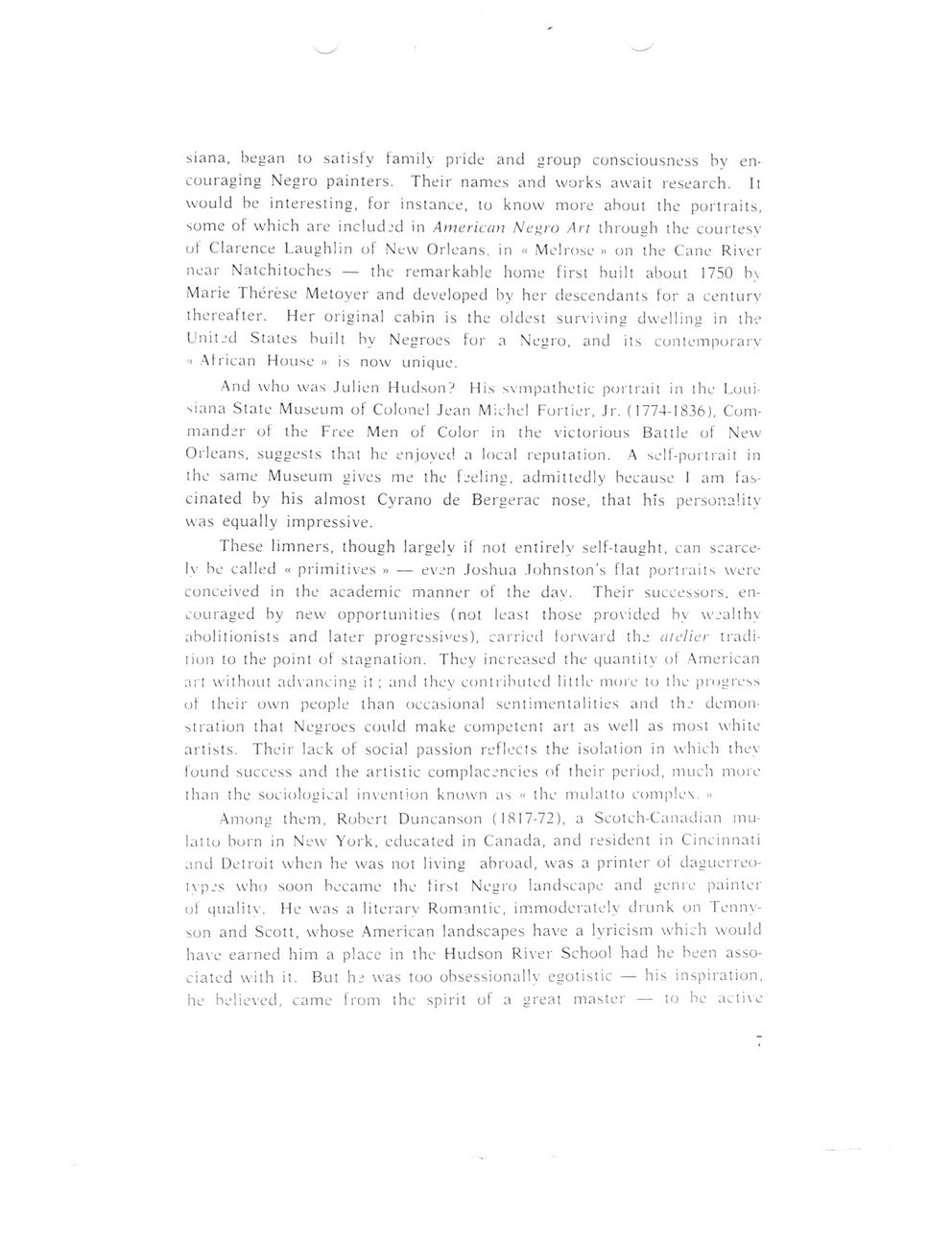This text was obtained via automated optical character recognition.
It has not been edited and may therefore contain several errors.
siana, began to satisfy family pride and group consciousness by encouraging Negro painters. Their names and works await research. It would be interesting, for instance, to know more about the portraits, some of which are included in American Negro Art through the courtesv ol Clarence Laughlin of New Orleans, in ? Melrose ? on the Cane River near Natchitoches ? the remarkable home first built about 1750 bv Marie Therese Metover and developed by her descendants lor a centurv thereafter. Her original cabin is the oldest surviving dwelling in th-e United States built by Negroes for a Negro, and its contemporary ? African House ? is now unique. And who was Julien Hudson? His sympathetic portrait in the Louisiana State Museum of Colonel Jean Michel Fortier, Jr. (1774-1836), Commander of the Free Men of Color in the victorious Battle of New Orleans, suggests that he enjoyed a local reputation. A self-portrait in the same Museum gives me the feeling, admittedly because I am fascinated by his almost Cyrano de Bergerac nose, that his personality was equally impressive. These limners, though largely if not entirely self-taught, can scarcely be called ? primitives ? ? even Joshua Johnston's flat portraits were conceived in the academic manner of the day. Their successors, encouraged by new opportunities (not least those provided by wealthy abolitionists and later progressives), carried forward the atelier tradition to the point of stagnation. They increased the quantity ol American art without advancing it ; anti they contributed little more to the progress of their own people than occasional sentimentalities and the demonstration that Negroes could make competent art as well as most white artists. Their lack of social passion reflects the isolation in which they found success and the artistic complacencies of their period, much more than the sociological invention known as ? the mulatto complex. ? Among them, Robert Duncanson (1817-72), a Scotch-Canadian mulatto born in New York, educated in Canada, and resident in Cincinnati and Detroit when he was not living abroad, was a printer ol daguerreotypes who soon became the first Negro landscape and genre painter ol quality. He was a litcrarv Romantic, immoderately drunk on 1 enny-son and Scott, whose American landscapes have a lyricism which would have earned him a place in the Hudson River School had he been associated with it. But he was too obsessionallv egotistic ? his inspiration, he believed, came Irom the spirit of a great master ? to be active

Barthe, Richmond American-Negro-Art-06